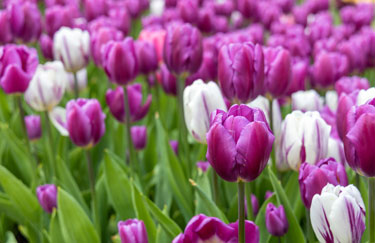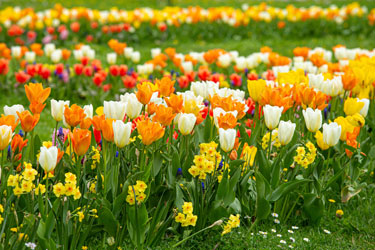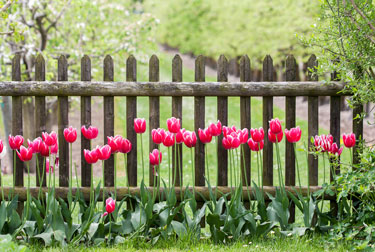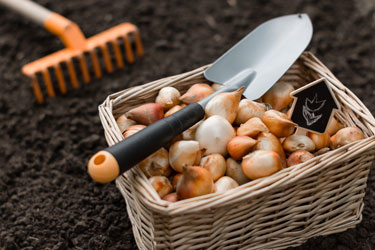Spring fling
Revered and treasured for centuries, tulips have a rare beauty that is uniquely their own. When ‘tulip mania’ struck Europe in the 17th century they became the subject of extreme obsession, traded for capital gain and leading to financial ruin for many.
Like many of spring’s most exquisite blooms, their appearance is a fleeting once-a-year delight - a brief thrill but one that’s well worth the splurge. For about the price of a cup of coffee, a handful of tulip bulbs will provide a longer lasting shot of endorphins for all who pass by than a single shot of caffeine. They are quick and easy to plant. Mid-May to June (April or May in coldest climates) are the key planting months and bulbs arrive in garden centres from March onwards.
Tulips are most often grown as annuals with new bulbs planted each year. They hail from high altitude regions of the Northern Hemisphere where winters are cold and summers are hot and dry. In their native habitats the bulbs survive underground to bloom again for several years. In gardens with similar natural conditions, they may do the same, but a repeat performance is rare two years in a row.
Even in our colder climates it can be difficult to keep the soil dry enough over summer for the tulip bulbs to survive without rotting, but some gardeners do achieve success growing tulips as perennials. To do this, bulbs are best lifted about six weeks after flowering (when the leaves have died down) and stored over summer in a dry place. A temperature that stays within 18-21ºC gives the best chance of flower initiation.
But in any garden, the easiest and most reliable pathway to a rewarding spring display is to purchase fresh bulbs and give them a chill in the fridge before planting into well drained soil or pots. Plant a range of different varieties for a longer flowering season or plant a heap of the same variety for the most breathtaking display.
The art of chilling
To ensure top quality long-stemmed blooms, some winter chilling is recommended. This is done by placing bulbs in the fridge for eight weeks prior to planting and then planting in late May, when the soil has cooled down, ideally below 12℃.
Sometimes bulbs have been chilled before they reach the stores but if in doubt, chilling before planting is still the best course of action. Insufficient chilling can result in flowers hiding among their leaves on stunted stems or sometimes no flowers at all.
In early April, place your tulip bulbs in a paper bag (or any breathable container) in the fridge. A regular fridge temperature is ideal. The freezer is too cold and will kill bulbs. The side of the fridge is best, away from the back of the fridge which may ice up or where there is condensation.
Ideally you will have a separate fridge (or fridge draw) so you can keep your bulbs away from fruit, as the ethylene released by ripening fruit can damage the flower buds developing inside the bulbs. An ethylene absorbing sachet in with the bulbs helps prevent this.
The warmer the climate the more care should be taken with chilling. Provided there is good drainage, deeper planting (15-20cm) helps to keep bulbs cool. In heavy soil, add a layer of sand below and above the bulb. The shade of deciduous trees (or the south side of the house) also helps keep your bulbs cool as they grow.
Moving potted tulips away from the sun until flowering time also makes sense, as pots can get hot when the sun is on them. Some gardeners sink their pots into the garden for extra cooling in winter. Bulbs planted in plastic nursery pots can be inserted into decorative containers at flowering time.
Problem shooting
Five reasons why spring bulbs may fail to flower in the first season after planting:
- Too wet? There is nothing bulbs hate more than poor drainage. If in doubt, plant in a pot.
- Too dry? This is an unusual problem since the growing season is in winter but early planted bulbs such as anemones are at risk.
- Too warm? Bulbs from cold climates need a winter chill in order to flower successfully. Make certain by chilling your tulip bulbs in the fridge.
- Too cold? Bulbs, such as freesias and gladioli, which come from warm climates, need protection from frost.
- Too shady? With few exceptions flowering bulbs need sun for flowering.

1-Mar-2025

Purple tulips planted enmasse for a grand display

Mixed meadow planting of tulips with daffodils

A row of single colour tulips to enhance a fence

Tulips bulbs ready to plant

